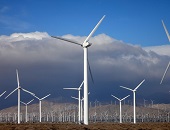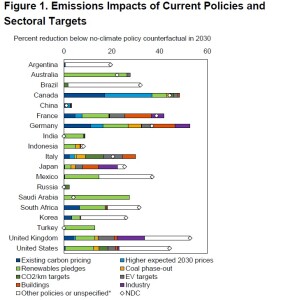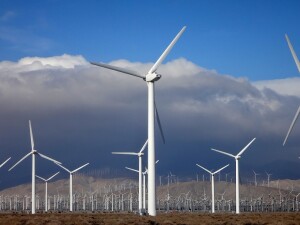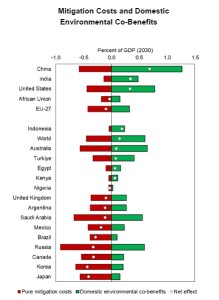To mitigate the consequences of climate change, the world requires international coordination. In 2015, the Paris Agreement was signed by 195 nations. Its long-term temperature goal is to keep the rise in mean global temperature to well below 2°C (3.6 °F) above pre-industrial levels, and preferably limit the increase to 1.5 °C (2.7 °F), which would reduce the worst effects of climate change.
Many countries are developing policies to get themselves on a path toward achieving the agreed-upon 1.5 °C goal. Although present progress may seem piecemeal, in the words of a Chinese proverb, “A great journey begins with a single step.”
The figure below shows that first-world countries such as Germany, Canada, the U.K., and the U.S., are well on their way.
It is hoped that soon large countries such as China and India will get on board. In concert, there would be collaborations between regional groups of nations—the African Union, and the European Union—to address the climate change problem.
How will removing fossil fuels affect world economics? In the meantime, experts at the International Monetary Fund (IMF) are examining big-picture questions of decarbonizing the global economy. On March 1, 2024, the IMF released a working paper titled “Fiscal Implications of Global Decarbonization.” As a working paper, it describes research in progress and is published in preliminary form in order to stimulate debate and comments by experts and stakeholders.
The five authors are all within the IMF: Simon Black, Ruud de Mooij, Vitor Gaspar, Ian W.H. Parry , and Karlygash Zhunussova.
How will economies be decarbonized? Short answer: through public spending. Governments should plan green public infrastructure such as power grids and transportation that have minimal carbon footprints. As well, they should stimulate innovation, and support use of clean technology wherever possible.
But how to get the funds? The revenues collected by the government of each nation in order to pay for decarbonizing the economy is a matter of increasing debate. The authors write that the implications “will be shaped by a combination of rising carbon prices, the gradual erosion of existing fuel tax bases, and possible revenue-sharing arrangements.”
“Countries will also need financing for compensating vulnerable households and industries,” the report notes, “and to transfer funds to poor countries.”
Weighing the costs of mitigation versus the environmental benefits, not all nations will come out ahead, as the figure below shows.
Even with the best of designs, the authors write, “global decarbonization will have anything from moderately positive to moderately negative impacts on fiscal balances in high-income countries.” [Emphasis added is ours.] “For middle and low-income countries, net fiscal impacts are generally positive and can be significant.”
The authors suggest that revenue sharing at the global level could possibly overcome the barrier between rich and poor countries.
Hopefully, government revenues will reflect the growing awareness of the causes of climate change. “Fiscal revenues increase if mitigation is done through carbon pricing,” says the report. “However, revenue from pre-existing taxes on motor fuels are currently significant in many high-income countries and will decline.”
The monies will go toward setting things right. “On the spending side, decarbonization calls for higher outlays on public infrastructure, public research, stimulus for private R&D, and possible deployment subsidies. Transfers will be necessary to compensate domestic households and firms. Financial transfers from high to low and lower middle-income countries… will further impact the fiscal equation of individual countries.”
Big nations and small, poor nations and rich, it is crucial for all parties to work together and solve the problem of climate change. ♠️
Click here to download the working paper, “Fiscal Implications of Global Decarbonization”: Free Download.
The two graphs are from the IMF working paper.
The wind farm photo is from Erik Wilde from Berkeley, CA, USA, CC BY-SA 2.0, via Wikimedia Commons.




